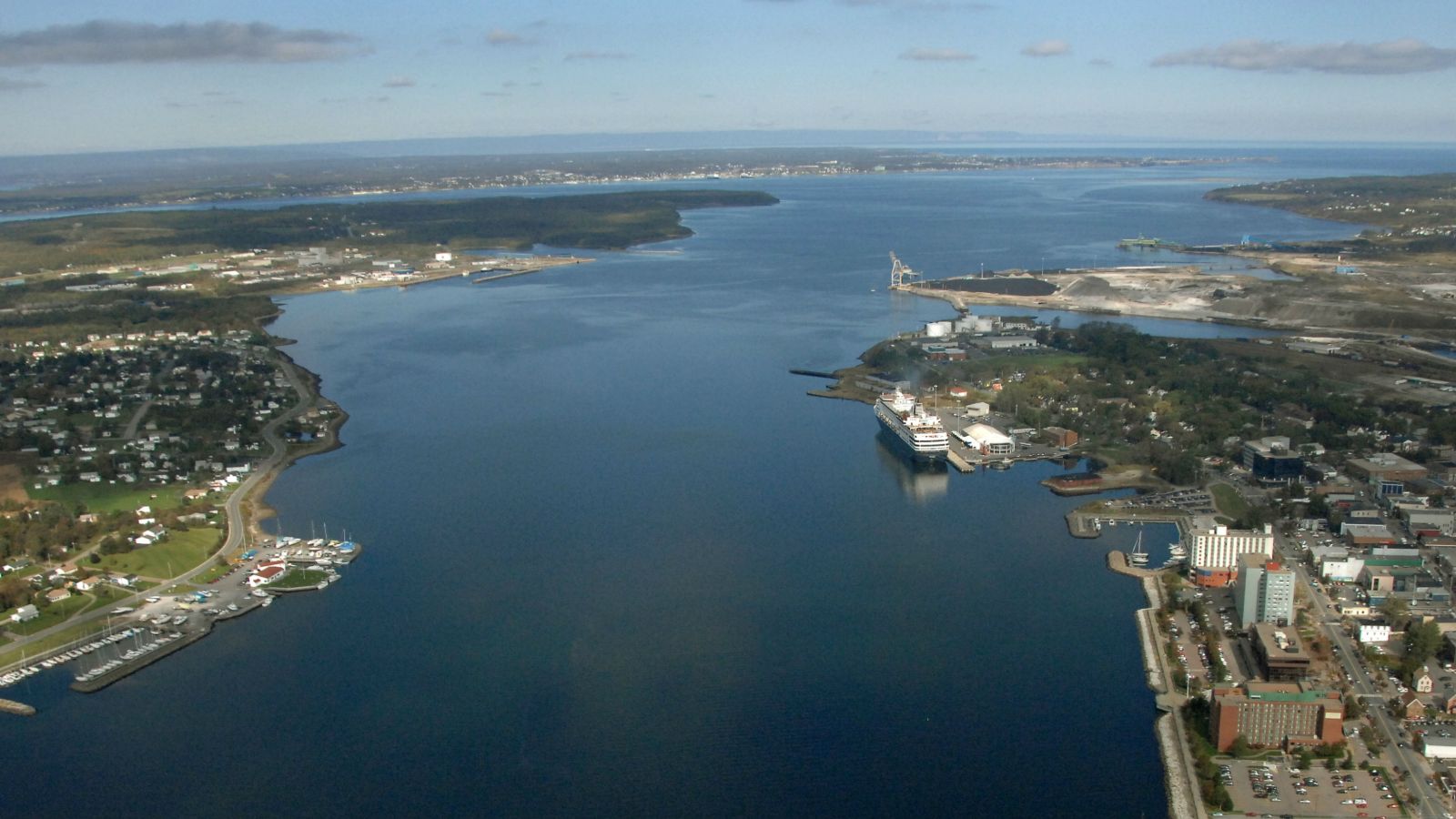Mega Container Ship Port for Eastern Canada?

The introduction of 18,000-TEU container ships between key Asian and European ports has greatly reduced the per-container transportation cost. While these ships offer substantial gains in productivity, many older ports such as those on the East Coast of the United States can neither berth the huge ships nor have sufficient terminals capacity to accommodate and process the massive number of containers that these ships carry.
However, there are inlets of sufficient depth along Canada’s East Coast that could accommodate their draft, and competition has arisen between two locations in the Province of Nova Scotia. The Melford Group selected a location in Chedabucto Bay, immediately south of the Strait of Canso, where an oceanic navigation lock controls an otherwise powerful tidal current. The competing location was the Port of Sydney, located on the western side of Cabot Strait, the channel that ships between Montreal and the Atlantic Ocean sail through. Melford appears, however, to have withdrawn from developing an eastern Canadian terminal.
An eastern Canadian port capable of berthing mega-container ships could serve as a trans-shipment terminal for containers moving between key Asian ports and east coast and inland American and Canadian ports. There is available vacant land around the Port of Sydney on which to construct a terminal big enough to process, transfer and temporarily store the massive number of containers that a mega-size container ship could deliver. While the Port of Halifax has long served as Canada’s main east coast port, it lacks the necessary terminal space to serve a mega-ship.
Larger Inland Ships
Ships sailing to the St. Lawrence River from either the Port of Halifax or the Melford location would pass through Strait of Canso navigation lock, which restricts ship size to 1,000 to 1,500-TEU. Larger vessels would have to sail the additional distance through Cabot Strait by the Port of Sydney, where a ship of 4,000-TEUs could sail directly into the strait and across the Gulf of St. Lawrence to the St. Lawrence River. Expansion of the Port of Montreal’s container terminals is already underway and includes a second terminal on the south side of the St. Lawrence River at Varennes.
Sydney could serve as the mega-ship trans-shipment port that connects to main east coast American ports of Boston, New York City, Newark, Philadelphia and Baltimore, and it could also serve as the companion port for the Port of Montreal that can berth and service ships of 4,000 TEUs and greater.
Larger container ships can more economically and directly sail between Sydney and Montreal than the two competing locations at the Strait of Canso or Halifax. The 1,000-mile distance by waterway between Montreal and Sydney is free of navigation locks.

Maritime Economics
A study involving container transportation between the ports of Long Beach and Memphis by the Sea Point Group in 2008 revealed that, despite the 6,000-mile transit via the Panama Canal, the maritime route offered savings of $500 to $1,000 per container over the 1,900-mile overland journey by rail.
Professor Jerry Fruin of the University of Minnesota undertook a study in 2010 that showed it cost less to move 100 containers on a barge between New Orleans and Pittsburgh through 23 locks along the inland waterway than the shorter distance by rail.
While Long Beach to Memphis and New Orleans to Pittsburgh involved navigation locks and longer distances than by rail, the maritime link between Sydney and Montreal is free from navigation locks and identical in distance to the mainly single-track, speed-restricted railway line. Therefore, maritime transportation can offer competitive times-in-transit and very competitive per-container transportation costs.
The projected future volume of containers that could move between Asia and the East Coast of North America, combined with restricted terminal space at American ports, enhances the case to develop a trans-shipment terminal for mega-container ships at the Port of Sydney.
The prime waterfront property that borders the inlet and inner harbor at Port of Halifax is surrounded by a population of 400,000 people with room to borrow and implement future development concepts from the precedent set at the Victoria and Albert dock development for tourism at Cape Town in South Africa. Allocating some 400 acres of prime waterfront property at Halifax to develop a supersize container terminal could cost in excess of $1 billion, money not in the coffers of the government of Nova Scotia.
There is merit in the private sector developing a mega-size container terminal at the Port of Sydney. Both Canada’s Federal Government and the provincial government of Nova Scotia need to remove institutional obstacles and open new doors of opportunity to encourage such a development.
.jpg)

The opinions expressed herein are the author's and not necessarily those of The Maritime Executive.
